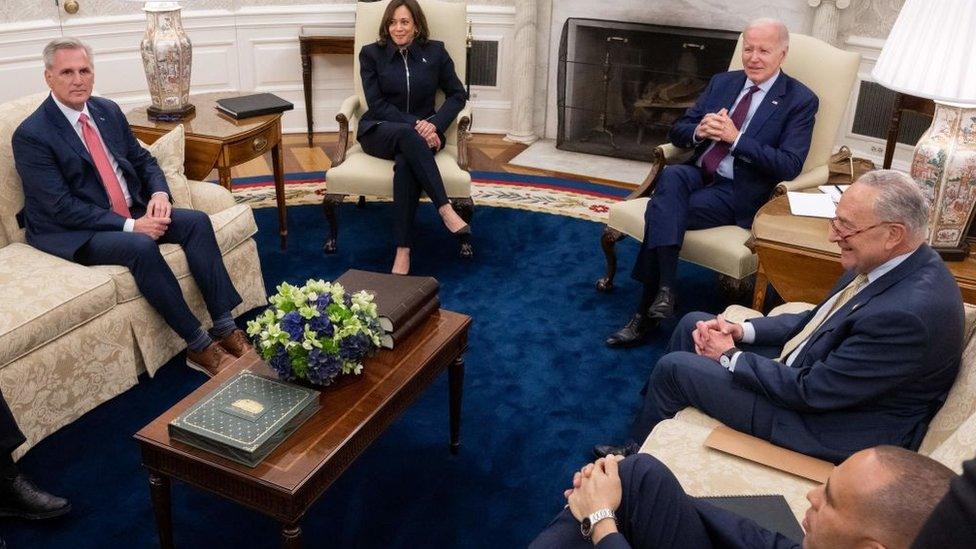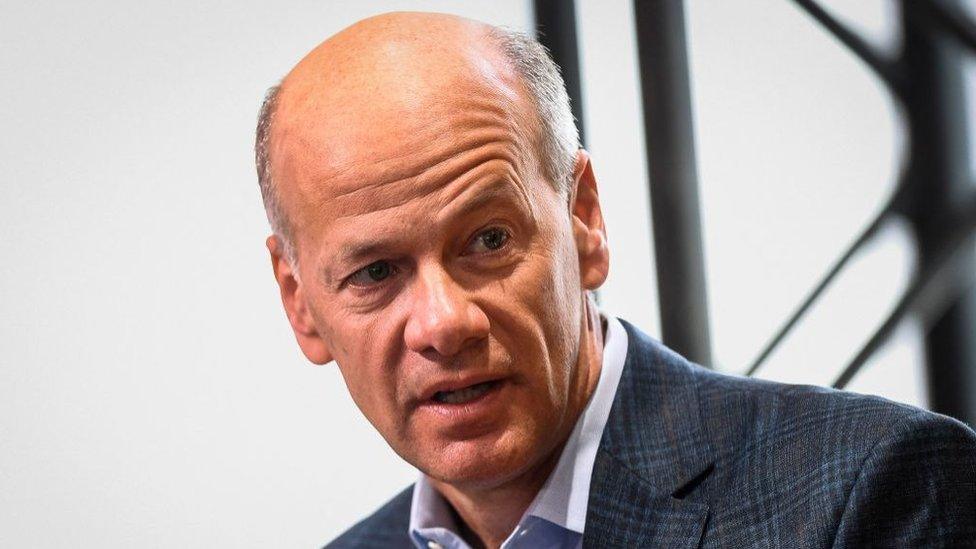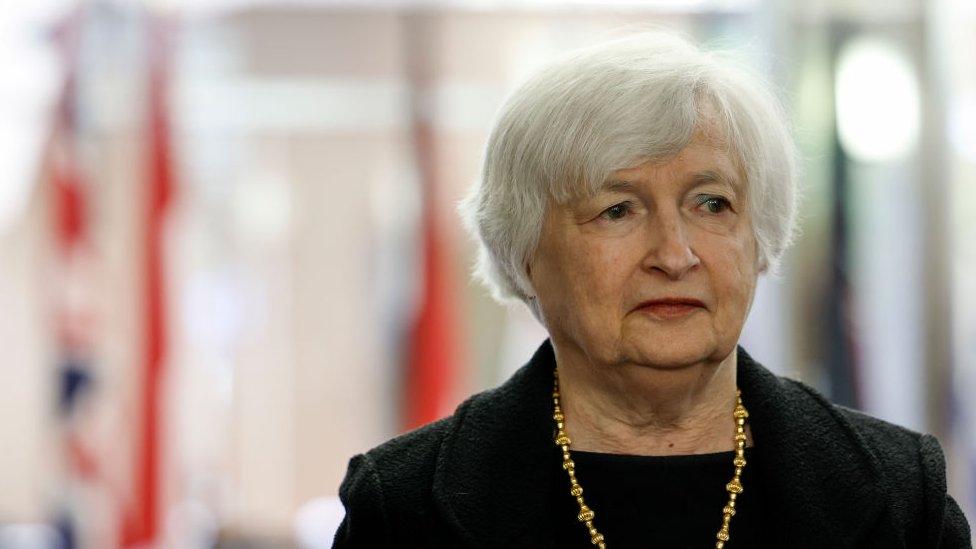US debt ceiling: New negotiators aim to break deadlock
- Published
Watch: The debt ceiling explained - in under 90 seconds
The White House and congressional Republicans have appointed a new set of negotiators, injecting fresh hope into talks to raise the US debt limit.
"Now we have a format, a structure," House of Representatives Speaker Kevin McCarthy told reporters, saying a deal was "possible" by the end of the week.
Without a deal, the US could enter a calamitous default on its $31.4tr (£25tr) debt as soon as 1 June.
The standoff has forced President Joe Biden to cut short a foreign trip.
Mr Biden departs later on Wednesday for Japan, where he will attend a Group of Seven (G7) summit, but he will return to Washington on Sunday, foregoing planned visits to Australia and Papua New Guinea.
Reaching the debt ceiling would mean the US government is unable to borrow any more money. This means it would no longer be able to pay the salaries of federal and military employees. Social Security cheques - payments that millions of pensioners in the US rely on - would also be suspended.
A failure to meet debt obligations, or a default, is also likely to trigger global financial chaos.
"We're going to come together because there's no alternative to [doing] the right thing for the country," Mr Biden said Wednesday. "We have to move on."
He said that, at an hour-long Oval Office meeting a day earlier, the top four congressional leaders had agreed the country cannot default.
Both sides expressed cautious optimism after the meeting that a deal was within reach, although Mr McCarthy said the two sides remain far apart.

Senior White House officials Steve Ricchetti, Shalanda Young and Louisa Terrell will now take the lead in negotiations for the president, while Louisiana Congressman Garret Graves, a key McCarthy ally, will represent House Republicans.
That is in addition to the daily meetings already taking place between senior White House and congressional aides.
But despite the new "structure" Mr McCarthy is touting, the clock is ticking ahead of the 1 June default deadline set out by the Treasury Department.
A deal to avoid this scenario has so far proven elusive. In April, Republicans proposed an agreement that would suspend the debt limit by $1.5tn or until 31 March 2024, whichever comes first.
In exchange for support for raising the debt ceiling, Republicans are demanding budget cuts and seeking to scupper several of Mr Biden's legislative priorities, including student loan forgiveness.
Mr McCarthy said at a news conference Wednesday that the president and Senate Democrats "have finally backed off their insane, un-rational idea that you just raise the debt ceiling" and were willing to negotiate over budgetary issues.
But it remains unlikely that most Democrats in Congress will support Republican demands such as work requirements for government aid recipients.
With lawmakers only in session in Washington for a handful of days until the 1 June deadline, House Democrats are attempting to force a vote on lifting the debt ceiling alone using a rare procedural move.
Urging his members to get behind the long-shot effort, Democratic House leader Hakeem Jeffries said he is "hopeful that a real pathway exists to find an acceptable, bipartisan resolution that prevents a default" but "it is important that all legislative options be pursued in the event that no agreement is reached".
The US debt ceiling has been raised, extended or revised 78 times since 1960.
The last time the country was approaching a default, back in 2011, lawmakers struck a deal only hours before the deadline.
That standoff led to a downgrade in the US credit rating, sent the stock market plummeting and increased the government's borrowing costs.
Related topics
- Published15 May 2023

- Published2 June 2023

- Published8 May 2023
